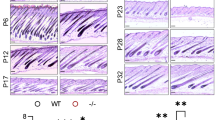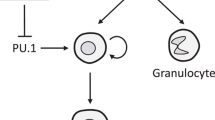Abstract
Hepoxilins are epoxy alcohols synthesized through the 12-lipoxygenase (12-LO) pathway in animal cells. The epidermis is the principal source of hepoxilins in humans. Here we report on the formation of novel hepoxilin regioisomers formed by the 15-LO pathway in human cells. The Hodgkin lymphoma cell line L1236 possesses high 15-lipoxygenase-1 (15-LO-1) activity and incubation of L1236 cells with arachidonic acid led to the formation of 11(S)-hydroxy-14(S),15(S)-epoxy 5(Z),8(Z),12(E) eicosatrienoic acid (14,15-HxA3 11(S)) and 13(R)-hydroxy-14(S),15(S)-epoxy 5(Z),8(Z),11(Z) eicosatrienoic acid (14,15-HxB3 13 (R)). In addition, two hitherto unidentified products were detected and these products were collected and analyzed by positive ion electrospray tandem mass spectrometry. These metabolites were identified as 11(S),15(S)-dihydroxy-14(R)-glutathionyl-5(Z),8(Z),12(E)-eicosatrienoic acid (14,15-HxA3-C) and 11(S),15(S)-dihydroxy-14(R)-cysteinyl-glycyl-5(Z),8(Z),12(E)-eicosatrienoic acid (14,15-HxA3-D). Incubation of L1236 cells with synthetic 14,15-HxA3 11(S) also led to the formation of 14,15-HxA3-C and 14,15-HxA3-D. Several soluble glutathione transferases, in particular GST M1-1 and GST P1-1, were found to catalyze the conversion of 14,15-HxA3 to 14,15-HxA3-C. L1236 cells produced approximately twice as much eoxins as cysteinyl-containing hepoxilins upon stimulation with arachidonic acid. Human eosinophils, nasal polyps and dendritic cells selectively formed 14,15-HxA3 11(S) and 14,15-HxB3 13(R) stereoisomers, but not cysteinyl-containing hepoxilins, after stimulation with arachidonic acid. Furthermore, purified recombinant 15-LO-1 alone catalyzed the conversion of arachidonic acid to 14,15-HxA3 11(S) and 14,15-HxB3 13(R), showing that human 15-LO-1 possesses intrinsic 14,15-hepoxilin synthase activity.







Similar content being viewed by others
Abbreviations
- EX:
-
Eoxin
- GST:
-
Glutathione transferase
- HPETE:
-
Hydroperoxyeicosatetraenoic acid
- HPLC:
-
High performance liquid chromatography
- Hx:
-
Hepoxilin
- LC–MS:
-
Liquid chromatography–mass spectrometry
- LO:
-
Lipoxygenase
References
Pace-Asciak CR (2009) The hepoxilins and some analogues: a review of their biology. Br J Pharmacol 158:972–981
Pace-Asciak CR (1994) Hepoxilins: a review on their cellular actions. Biochim Biophys Acta 1215:1–8
Nigam S, Shankaranarayanan P, Ciccoli R, Ishdorj G, Schwarz K, Petrucev B, Kuhn H, Haeggstrom JZ (2004) The rat leukocyte-type 12-lipoxygenase exhibits an intrinsic hepoxilin A3 synthase activity. J Biol Chem 279:29023–29030
Pace-Asciak CR, Granstrom E, Samuelsson B (1983) Arachidonic acid epoxides. Isolation and structure of two hydroxy epoxide intermediates in the formation of 8, 11, 12- and 10, 11, 12-trihydroxyeicosatrienoic acids. J Biol Chem 258:6835–6840
Pace-Asciak CR, Laneuville O, Chang M, Reddy CC, Su WG, Corey EJ (1989) New products in the hepoxilin pathway: isolation of 11-glutathionyl hepoxilin A3 through reaction of hepoxilin A3 with glutathione S-transferase. Biochem Biophys Res Commun 163:1230–1234
Laneuville O, Corey EJ, Couture R, Pace-Asciak CR (1991) Hepoxilin A3 (HxA3) is formed by the rat aorta and is metabolized into HxA3-C, a glutathione conjugate. Biochim Biophys Acta 1084:60–68
Sutherland M, Shankaranarayanan P, Schewe T, Nigam S (2001) Evidence for the presence of phospholipid hydroperoxide glutathione peroxidase in human platelets: implications for its involvement in the regulatory network of the 12-lipoxygenase pathway of arachidonic acid metabolism. Biochem J 353:91–100
Brash AR, Yu Z, Boeglin WE, Schneider C (2007) The hepoxilin connection in the epidermis. FEBS J 274:3494–3502 (Epub 2007 Jul 3492)
Anton R, Puig L, Esgleyes T, de Moragas JM, Vila L (1998) Occurrence of hepoxilins and trioxilins in psoriatic lesions. J Invest Dermatol 110:303–310
Anton R, Vila L (2000) Stereoselective biosynthesis of hepoxilin B-3 in human epidermis. J Invest Dermatol 114:554–559
Nigam S, Zafiriou MP, Deva R, Ciccoli R, Roux-Van der Merwe R (2007) Structure, biochemistry and biology of hepoxilins: an update. FEBS J 274:3503–3512
Eckl KM, Krieg P, Kuster W, Traupe H, Andre F, Wittstruck N, Furstenberger G, Hennies HC (2005) Mutation spectrum and functional analysis of epidermis-type lipoxygenases in patients with autosomal recessive congenital ichthyosis. Hum Mutat 26:351–361
Yu Z, Schneider C, Boeglin WE, Brash AR (2005) Mutations associated with a congenital form of ichthyosis (NCIE) inactivate the epidermal lipoxygenases 12R-LOX and eLOX3. Biochim Biophys Acta 1686:238–247
de Juanes S, Epp N, Latzko S, Neumann M, Furstenberger G, Hausser I, Stark HJ, Krieg P (2009) Development of an ichthyosiform phenotype in Alox12b-deficient mouse skin transplants. J Invest Dermatol 129:1429–1436. Epub 2009 Jan 1421
Hammarstrom S, Hamberg M, Samuelsson B, Duell EA, Stawiski M, Voorhees JJ (1975) Increased concentrations of nonesterified arachidonic acid, 12L-hydroxy-5, 8, 10, 14-eicosatetraenoic acid, prostaglandin E2, and prostaglandin F2alpha in epidermis of psoriasis. Proc Natl Acad Sci USA 72:5130–5134
Pace-Asciak CR, Martin JM, Corey EJ (1986) Hepoxilins, potential endogenous mediators of insulin release. Prog Lipid Res 25:625–628
Laneuville O, Couture R, Pace-Asciak CR (1992) Hepoxilins sensitize blood vessels to noradrenaline–stereospecificity of action. Br J Pharmacol 105:297–304
Laneuville O, Corey EJ, Couture R, Pace-Asciak CR (1991) Hepoxilin A3 increases vascular permeability in the rat skin. Eicosanoids 4:95–97
Sutherland M, Schewe T, Nigam S (2000) Biological actions of the free acid of hepoxilin A3 on human neutrophils. Biochem Pharmacol 59:435–440
Mrsny RJ, Gewirtz AT, Siccardi D, Savidge T, Hurley BP, Madara JL, McCormick BA (2004) Identification of hepoxilin A3 in inflammatory events: a required role in neutrophil migration across intestinal epithelia. Proc Natl Acad Sci USA 101:7421–7426
Laneuville O, Couture R, Pace-Asciak CR (1992) Neurokinin A-induced contraction of guinea-pig isolated trachea: potentiation by hepoxilins. Br J Pharmacol 107:808–812
Nadel JA, Conrad DJ, Ueki IF, Schuster A, Sigal E (1991) Immunocytochemical localization of arachidonate 15-lipoxygenase in erythrocytes, leukocytes, and airway cells. J Clin Invest 87:1139–1145
Gulliksson M, Brunnstrom A, Johannesson M, Backman L, Nilsson G, Harvima I, Dahlen B, Kumlin M, Claesson HE (2007) Expression of 15-lipoxygenase type-1 in human mast cells. Biochim Biophys Acta 1771:1156–1165. Epub 2007 Jun 1123
Hunter JA, Finkbeiner WE, Nadel JA, Goetzl EJ, Holtzman MJ (1985) Predominant generation of 15-lipoxygenase metabolites of arachidonic acid by epithelial cells from human trachea. Proc Natl Acad Sci USA 82:4633–4637
Turk J, Maas RL, Brash AR, Roberts LJ II, Oates JA (1982) Arachidonic acid 15-lipoxygenase products from human eosinophils. J Biolog Chem 257:7068–7076
Claesson HE (2009) On the biosynthesis and biological role of eoxins and 15-lipoxygenase-1 in airway inflammation and Hodgkin lymphoma. Prostaglandins Other Lipid Mediat 89:120–125
Chu HW, Balzar S, Westcott JY, Trudeau JB, Sun Y, Conrad DJ, Wenzel SE (2002) Expression and activation of 15-lipoxygenase pathway in severe asthma: relationship to eosinophilic phenotype and collagen deposition. Clin Exp Allergy 32:1558–1565
Bradding P, Redington AE, Djukanovic R, Conrad DJ, Holgate ST (1995) 15-Lipoxygenase immunoreactivity in normal and in asthmatic airways. Am J Respir Crit Care Med 151:1201–1204
Shannon VR, Chanez P, Bousquet J, Holtzman MJ (1993) Histochemical evidence for induction of arachidonate 15-lipoxygenase in airway disease. Am Rev Respir Dis 147:1024–1028
Feltenmark S, Gautam N, Brunnstrom A, Griffiths W, Backman L, Edenius C, Lindbom L, Bjorkholm M, Claesson HE (2008) Eoxins are proinflammatory arachidonic acid metabolites produced via the 15-lipoxygenase-1 pathway in human eosinophils and mast cells. Proc Natl Acad Sci USA 105:680–685
Claesson HE, Griffiths WJ, Brunnstrom A, Schain F, Andersson E, Feltenmark S, Johnson HA, Porwit A, Sjoberg J, Bjorkholm M (2008) Hodgkin Reed-Sternberg cells express 15-lipoxygenase-1 and are putative producers of eoxins in vivo: novel insight into the inflammatory features of classical Hodgkin lymphoma. FEBS J 275:4222–4234
Reynaud D, Ali M, Demin P, Pace-Asciak CR (1999) Formation of 14,15-hepoxilins of the A(3) and B(3) series through a 15-lipoxygenase and hydroperoxide isomerase present in garlic roots. J Biol Chem 274:28213–28218
Holtzman MJ, Hansbrough RJ, Rosen GD, Turk J (1988) Uptake, release and novel species-dependent oxygenation of arachidonic acid in human and animal airway epithelial cells. Biochim Biophys Acta 963:401–413
Andersson E, Schain F, Svedling M, Claesson HE, Forsell PK (2006) Interaction of human 15-lipoxygenase-1 with phosphatidylinositol bisphosphates results in increased enzyme activity. Biochim Biophys Acta 1761:1498–1505
Eklund BI, Moberg M, Bergquist J, Mannervik B (2006) Divergent activities of human glutathione transferases in the bioactivation of azathioprine. Mol Pharmacol 70:747–754
Johansson AS, Stenberg G, Widersten M, Mannervik B (1998) Structure-activity relationships and thermal stability of human glutathione transferase P1–1 governed by the H-site residue 105. J Mol Biol 278:687–698
Jakobsson PJ, Mancini JA, Ford-Hutchinson AW (1996) Identification and characterization of a novel human microsomal glutathione S-transferase with leukotriene C4 synthase activity and significant sequence identity to 5-lipoxygenase-activating protein and leukotriene C4 synthase. J Biol Chem 271:22203–22210
Corey EJ, Su W-G, Mehrotra MM (1984) A efficient and simple method for the conversion of 15-HPETE to 14, 15-EPETE (lipotriene A) and 5-HPETE to leukotriene A as the methyl esters. Tet Lett 25:5123–5126
Hevko JM, Murphy RC (2001) Electrospray ionization and tandem mass spectrometry of cysteinyl eicosanoids: leukotriene C4 and FOG7. J Am Soc Mass Spectrom 12:763–771
Pfister SL, Spitzbarth N, Nithipatikom K, Edgemond WS, Falck JR, Campbell WB (1998) Identification of the 11,14,15- and 11,12,15-trihydroxyeicosatrienoic acids as endothelium-derived relaxing factors of rabbit aorta. J Biol Chem 273:30879–30887
Narumiya S, Salmon JA, Cottee FH, Weatherley BC, Flower RJ (1981) Arachidonic acid 15-lipoxygenase from rabbit peritoneal polymorphonuclear leukocytes. Partial purification and properties. J Biol Chem 256:9583–9592
Pfister SL, Spitzbarth N, Zeldin DC, Lafite P, Mansuy D, Campbell WB (2003) Rabbit aorta converts 15-HPETE to trihydroxyeicosatrienoic acids: potential role of cytochrome P450. Arch Biochem Biophys 420:142–152
Bryant RW, Schewe T, Rapoport SM, Bailey JM (1985) Leukotriene formation by a purified reticulocyte lipoxygenase enzyme. J Biol Chem 260:3548–3555
Canny GO, McCormick BA (2008) Bacteria in the intestine, helpful residents or enemies from within? Infect Immun 76:3360–3373
Warholm M, Guthenberg C, Mannervik B (1983) Molecular and catalytic properties of glutathione transferase mu from human liver: an enzyme efficiently conjugating epoxides. Biochemistry 22:3610–3617
Acknowledgments
This work was supported by grants from the Karolinska Institutet, the Swedish Research Council, the Swedish Cancer Society, Orexo AB, and European Commission Sixth Framework Programme Grant LSHM-CT-2004-005033.
Author information
Authors and Affiliations
Corresponding author
Electronic supplementary material
Below is the link to the electronic supplementary material.
About this article
Cite this article
Brunnström, Å., Hamberg, M., Griffiths, W.J. et al. Biosynthesis of 14,15-Hepoxilins in Human L1236 Hodgkin Lymphoma Cells and Eosinophils. Lipids 46, 69–79 (2011). https://doi.org/10.1007/s11745-010-3485-1
Received:
Accepted:
Published:
Issue Date:
DOI: https://doi.org/10.1007/s11745-010-3485-1




